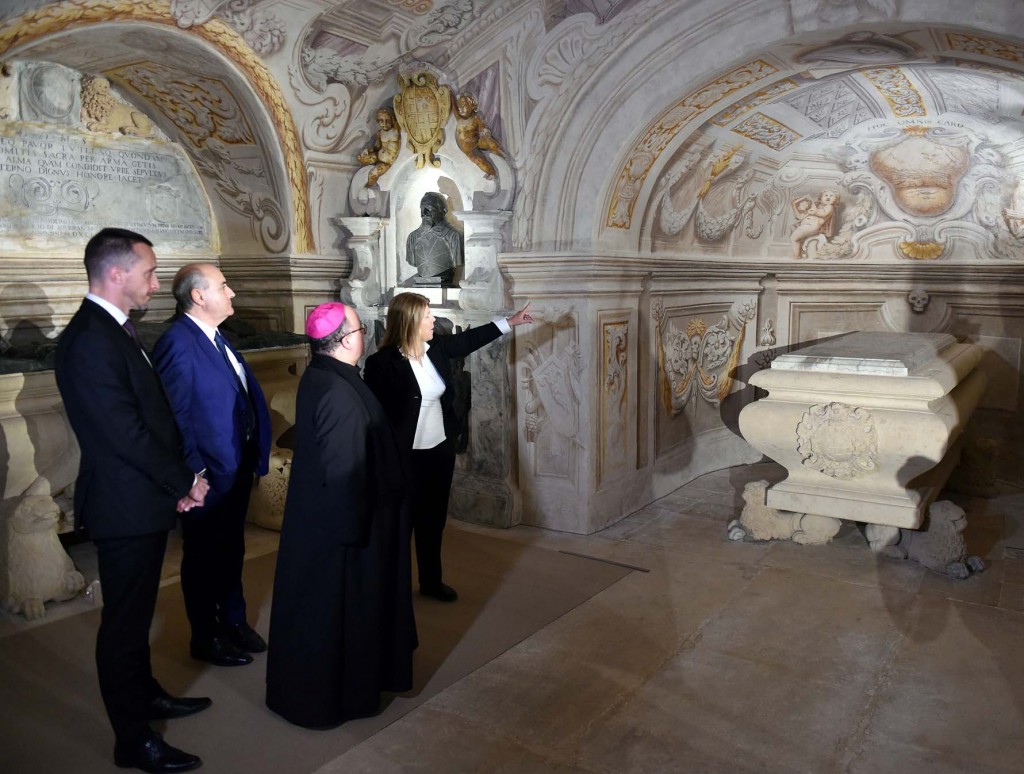
Official opening to celebrate the restoration of the Grand Masters’ Crypt at St John’s Co-Cathedral
The inauguration and official opening of the Grand Masters’ Crypt was held on Tuesday 3 March 2020, at St John’s Co-Cathedral, Valletta.The restoration and conservation project to protect this unique monument was financed by The St John’s Co-Cathedral Foundation – a project that amounted to approximately half a million Euro.Those for the inauguration were addressed H.G. Mgr. Charles J. Scicluna – Archbishop of Malta, the Hon. José Herrera – Minister for National Heritage, the Arts and Local Government, the President of the Foundation Mr Wilfrid Buttigieg, and Curator/CEO Ms Cynthia de Giorgio.

H.G. Mgr. Charles J. Scicluna, said that the Knights of the Order of Malta left behind them a very rich patrimony, which is synonymous to the words of Jesus Christ: ’…unless a grain of wheat falls into the earth and dies, it remains just a single grain; but if it dies, it bears much fruit’ (Jn 12, 24). The Grand Masters have so much importance to their patrimony because they believed in the physical resurrection of the body, and wanted to be buried in the most sacred place of the conventual church of the Order. The Archbishop said that the Crypt holds the best European cultural expression where heritage meets faith.
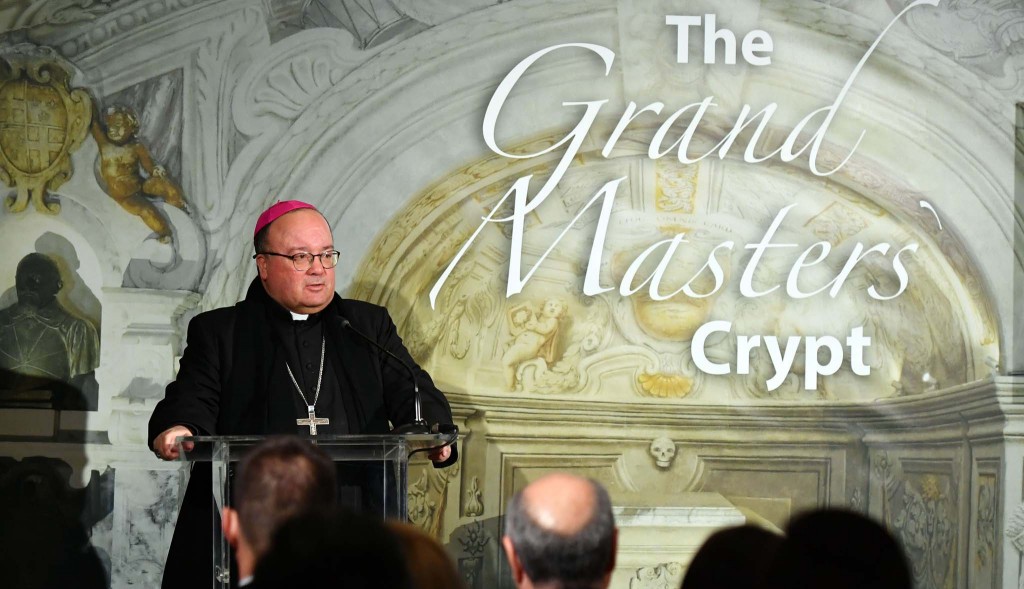
The Hon. José Herrera mentioned that cultural heritage is priceless as it is a reflection of our history. With this knowledge, a national cultural strategy can be planned and strengthened that will lead to a visionary development for the future. Since there are those who do not value our cultural heritage enough, more awareness is necessary as it is the main source of our identity and national values. New ways of financing needed to be found for conservation as the management of heritage site creates jobs. He sustained that the Government, together with the Church are committed to The St John’s Co-Cathedral Foundation – a success story that is carrying out prestigious restoration and conservation projects. He stressed that the investment in restoration including the protection of artistic jewels that this nation is blessed with is, an added value for tourists. In the same manner, the environment should be conserved as the Maltese people deserve a better quality of life.
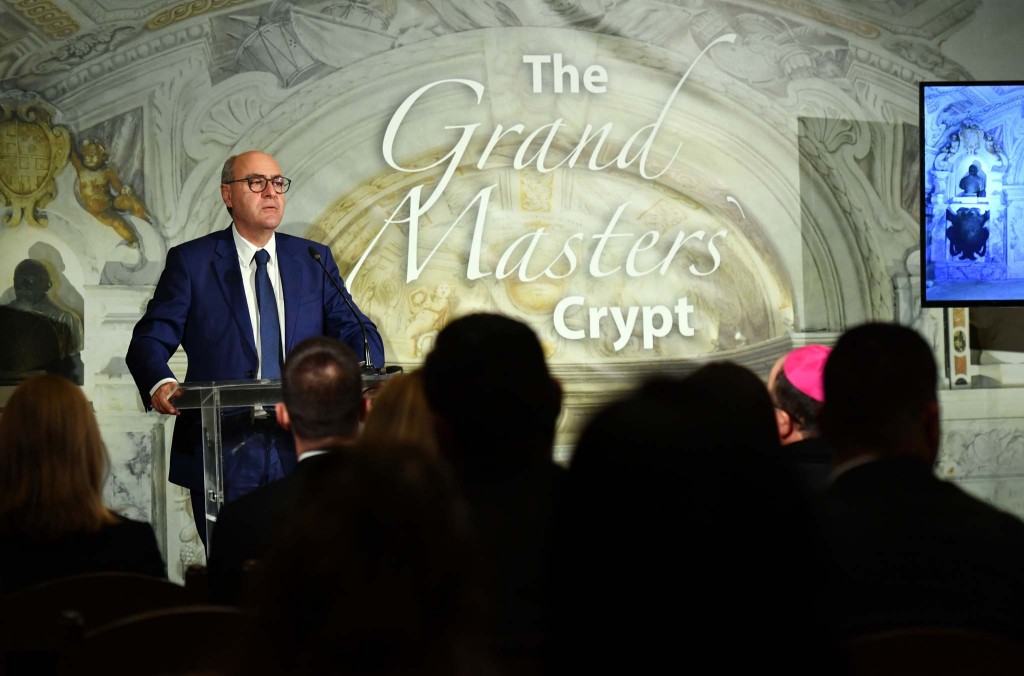
Mr Wilfrid Buttigieg, the President of The Foundation explained that the aim of the organisation was not only to restore, but also to conserve the historical, religious and artistic patrimony which lies at St. John’s Co-Cathedral. On behalf of the Foundation, he thanked all those involved, for the excellent work done over the years. He explained that the Grand Masters Crypt brought experts from diverse areas – such as architects, engineers, conservators, art historians and manual skilled workers to work together and achieve one aim. The President also thanked past Council members and the executive team of the Foundation who worked to make the Crypt accessible to the Maltese community at large as well as the numerous tourists who visit St. John’s annually. Mr Buttigieg concluded by calling upon stakeholders in the field of culture and the arts, the media, the Church and politicians to stand alongside the Foundation in its mission of custodianship and protection of one of Malta’s most prestigious tourist locations and world heritage sites.
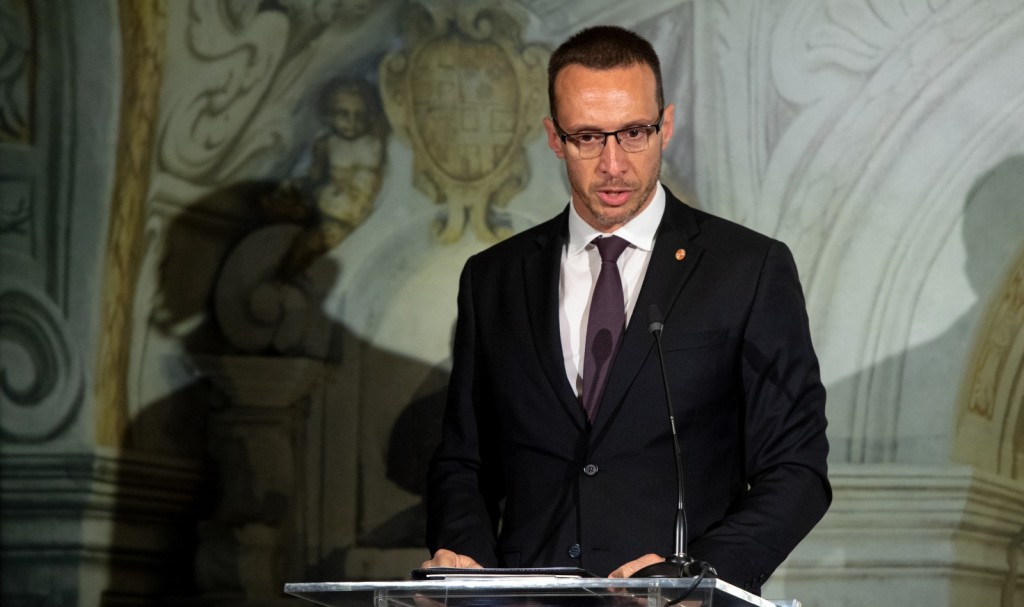
The Co-Cathedral’s Curator, Ms Cynthia de Giorgio spoke about the process of restoration and conservation: a process which lasted 15 years. This project started with climate monitoring, to survey the damage of the limestone monuments and tombstones of the Grand Masters. After came the restoration – a delicate process as every artefact needed specific treatment. The restoration process also used some of the latest technology in the field such as nanotechnology. The Curator explained that this was followed by the installation of an Environment Control System to keep constant levels of temperature and relative humidity. With the assistance of 3D digital modelling, the passages for the ducting were identified with the least intervention possible. The Curator expressed her satisfaction for the successful completion of this project that now makes the Crypt accessible for the knowledge and interest of future generations.

The Archbishop blessed the Crypt of the Grand Masters. This inauguration renewed the opening of the Crypt for visitors to the Cathedral which receives more than half a million tourists a year. The Crypt is accessed from a flight of steps from the chapel of the Langue of Provence and see the interior from a viewing platform.

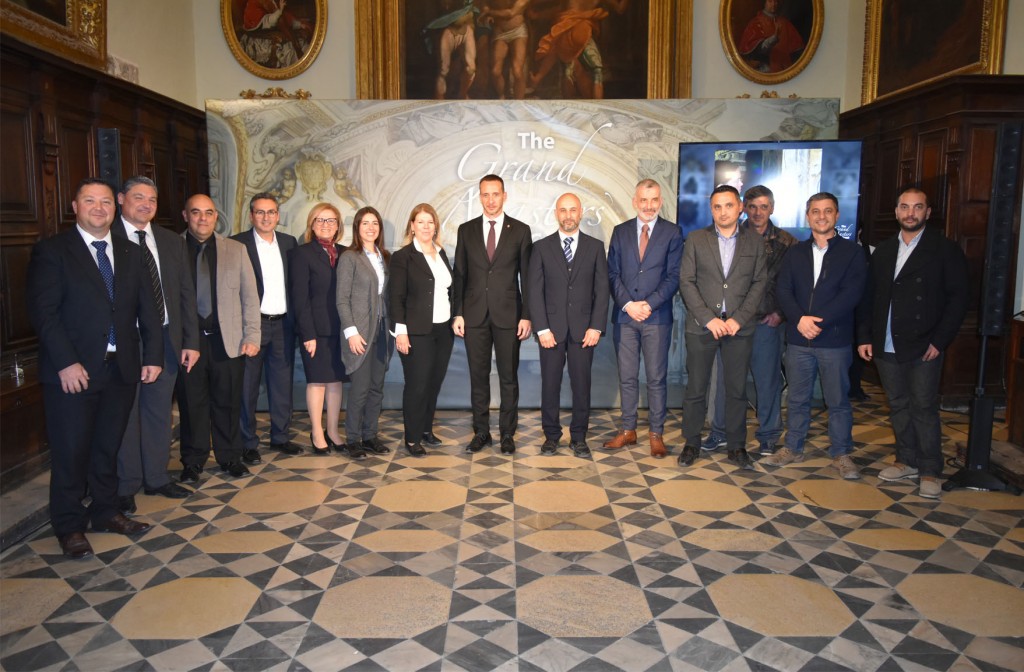
Photo Credit: DOI – Jeremy Wonnacott / Archdiocese of Malta – church.mt and The St John’s Co-Cathedral Foundation